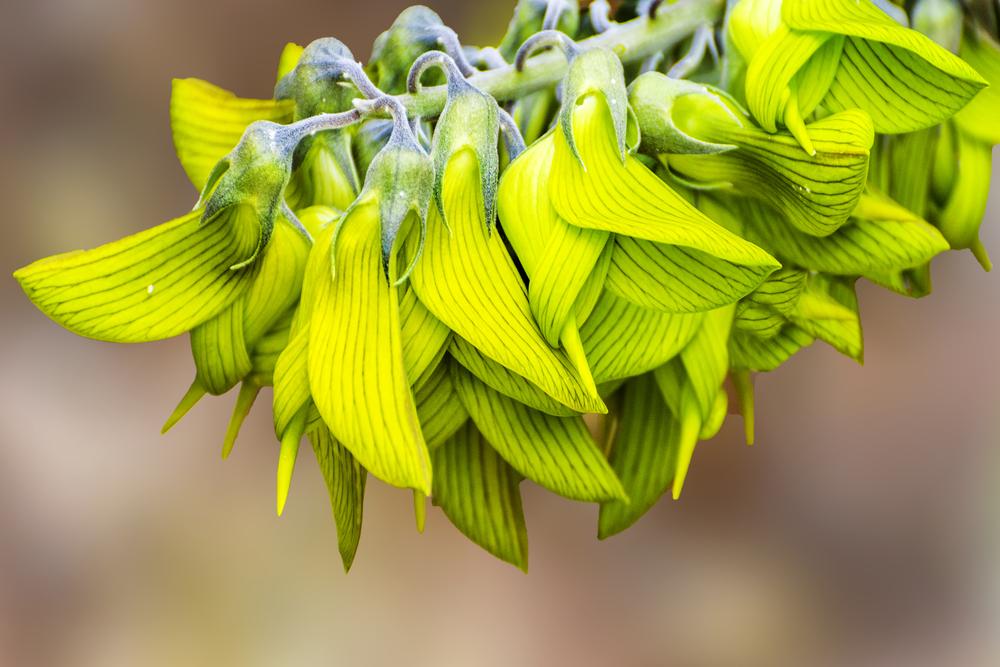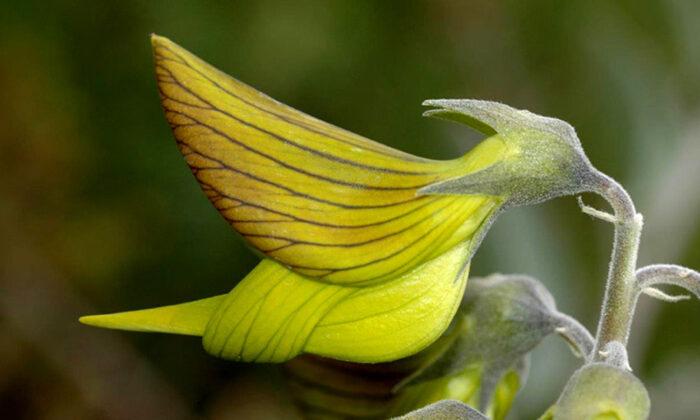To the untrained eye, this perfect little parcel of petals may look like an origami hummingbird. It is, in fact, a native Australian flower that blooms to emulate the tiny bird perfectly, and it’s taking the internet by storm.
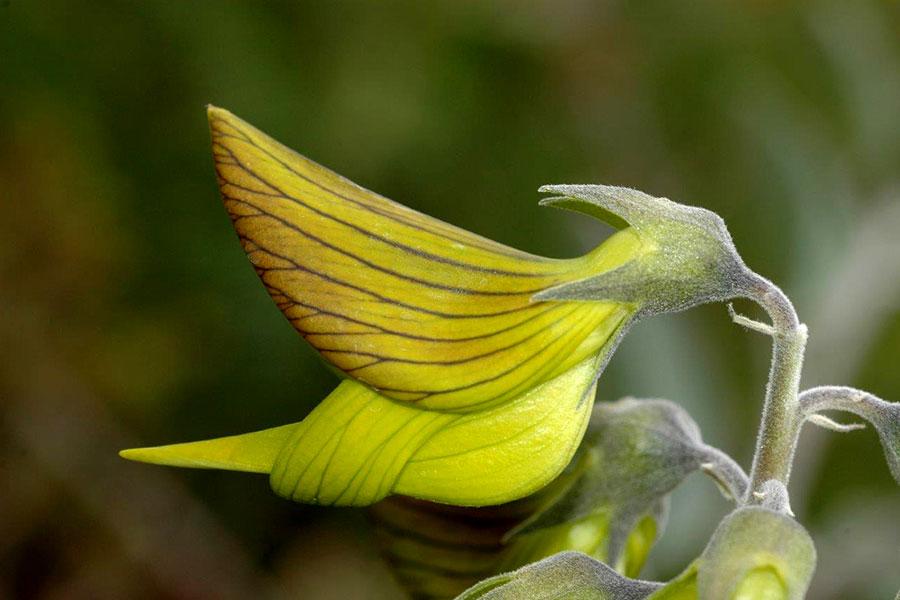
The regal birdflower is related to peas and beans. The first part of the plant’s scientific name, Crotalaria, derives from the Greek word crotalon, meaning “rattle” or “castanet,” and refers to the way in which the seeds rattle in the plant’s club-shaped pods when shaken, notes the website.
The Australian-native plant can grow up to 4 meters in height. In bloom, its oval-shaped leaves give way to a mass of large bright-green flowers with purple-brown veins at the end of each branch.
Upon close inspection, it is these green flowers that so closely resemble the pert wings of a hummingbird in flight. Each bird-looking flower is attached by its “beak”—which in reality is the flower’s calyx—to the stem of a branch.
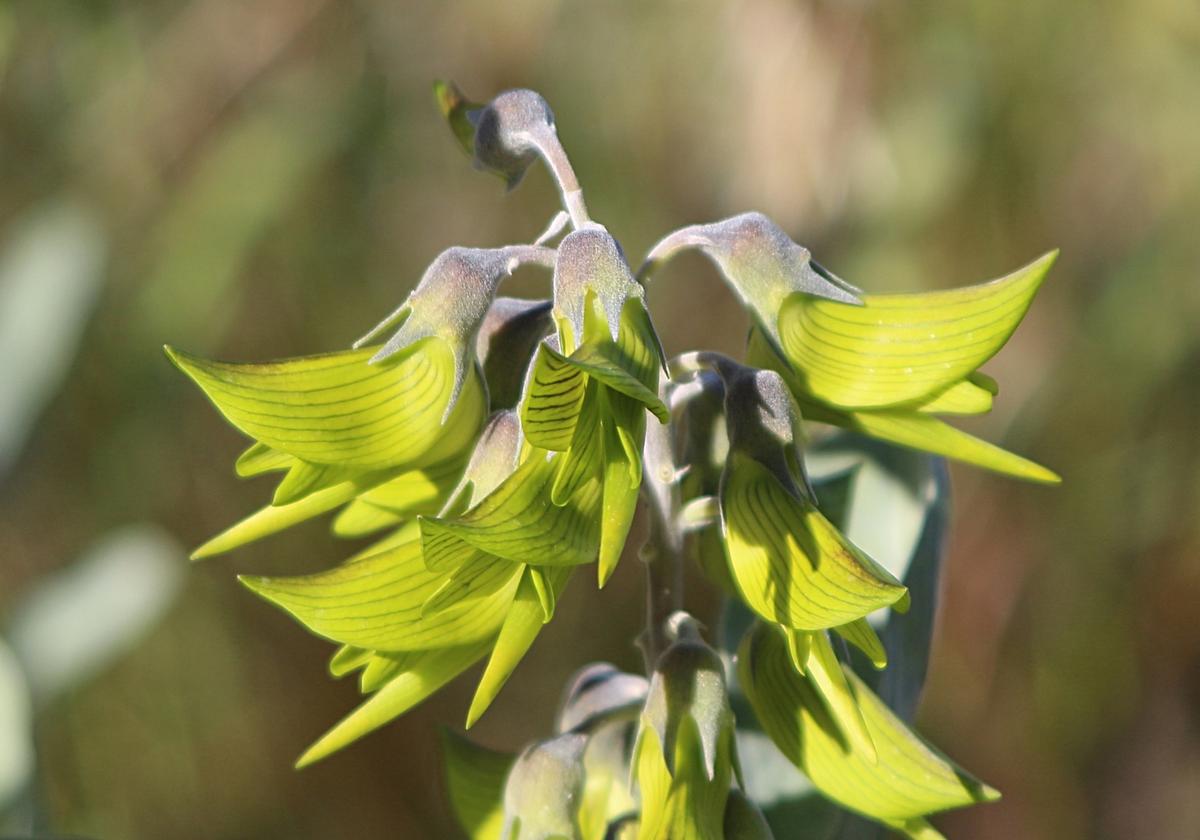
The regal birdflower underwent a stateside surge in desirability after a photo of the plant’s adorable bird-like flowers went viral in summer of 2019.
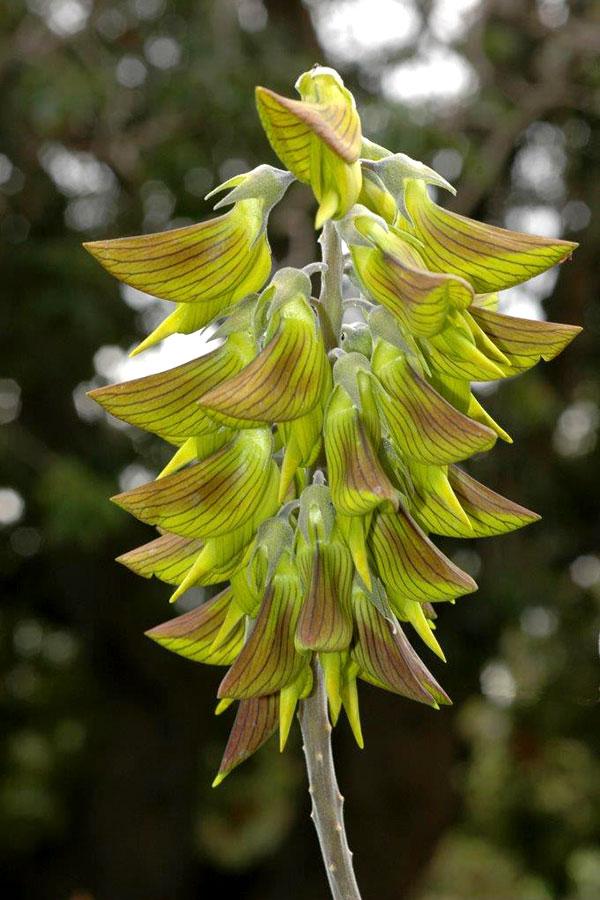
“One could also argue that the resemblance to a bird is adaptive because it signals to another kind of receiver (e.g. herbivore, seed disperser, pollinator). This I would argue is exceptionally unlikely,” the scientist continued, “because it is exceptionally unlikely that this flower does indeed appear like a bird to any other observer.”
The hummingbird that the flower so perfectly emulates is not even native to Western Australia. The majority consensus in the scientific community is that the regal birdflower’s appearance is simply a phenomenon known as pareidolia, a curious tendency among humans to perceive meaningful images within random visual patterns.
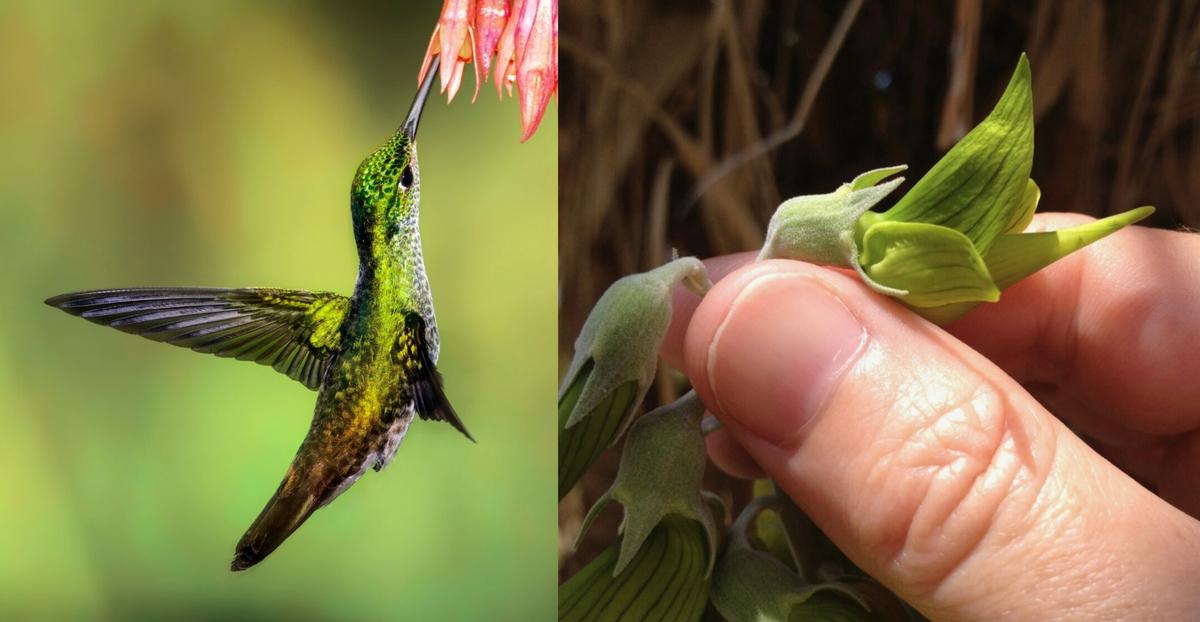
As such, a plethora of plant lovers are keen to assist the regal birdflower in a stateside emigration.
